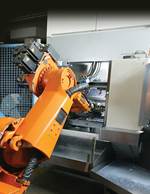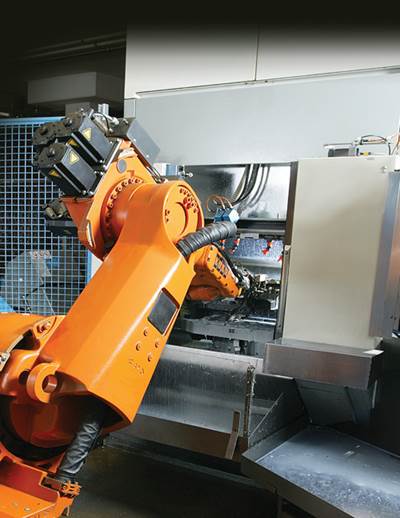Passivation Problems
I am having a problem with parts passivated in citric asic. They are 303ss and passivated for 30 min. My end user is sending them out for a salt spray test and they are failing. I welcome any thoughts or ideas on this problem.
Q. I am having a problem with parts passivated in citric asic. They are 303ss and passivated for 30 min. My end user is sending them out for a salt spray test and they are failing. I welcome any thoughts or ideas on this problem. T.L.
A. Without any more detail, it is difficult to asses your situation completely, but we can discuss
passivation of stainless steel in general terms. As a review, stainless steels (300 series austenitic or 400 series ferritic) obtain much of their corrosion resistance from a chromium oxide layer on the surface that passivates the materials. What that means is that as a material is polarized (by a corrosive solution, differential oxygen concentration, galvanic couple, etc.), that it resists the tendency to generate corrosion (unlike a material that obtains its corrosion resistance by means of a sacrificial coating or barrier, like galvanized steel). If that surface oxide is disturbed, that area will be much more prone to corrosion.
A couple examples of how the chrome oxide can be disturbed include heat treating in a reducing atmosphere and welding. Additionally, some metalworking and assembly operations such as machining and welding can introduce contaminants into the workpiece. The passivation process is also intended to dissolve the inclusions in the surface. This can occur from the use of steel brushes to grind/polish the surface and ferrite (iron plus carbon) solidification in a stainless weld pool. Note that even if using the correct alloy to weld a stainless steel, there is a certain amount of segregation that will occur in the weld pool as it solidifies. That segregation is what will create some undesirable inclusions at the surface.
So that is the reason for passivation (the why?), now how to do it. There are generally two industry-accepted practices for passivating austenitic (300 series) stainless steel. Both are performed in an oxidizing acid. One is safer than the other. One is generally more accepted than the other. The oldest and most generally accepted process uses nitric acid in the range of 20–40% by volume and immersing the part for about 30 min. This can be done at room temperature up to about 140°F. The higher the temperature, the shorter the contact time is necessary. While this is a generally accepted practice and is referenced both in MIL and ASTM specifications, it is considerably more dangerous and generates more hazardous waste than the use of the alternative citric acid passivation. This can be used at about 10% by weight for about 30 minutes. This bath needs to be operated at elevated temperature (approximately 150°F for a 300 series stainless steel) in order to be effective.
As far as acceptance criteria, ASTM A 967 provides several methods to assess the quality of the passivation. The salt spray requirements listed in that specification reference a short, two hour exposure in a neutral, 5% salt fog per ASTM B 117 after which the part shall not exhibit any signs of rusting or staining attributable to the free iron imbedded in the surface. This should be relatively easy to obtain with properly passivated parts.
To remedy your situation, I would suggest examining where your current process is in comparison to what I have listed above for 300 series stainless steel. If there are some areas that are obviously different, fix those first and evaluate again with the salt spray method. If your current customer is unwilling to be your test guinea pig, there are many labs throughout the country that can run your parts in their salt fog cabinets. If you feel you have fixed your process and have it under control, I would suggest starting to work with your customer to identify what they potentially could be doing that would result in the parts failing. For instance, if they are welding and use an incorrect weld rod when joining stainless components that could result in failing salt spray results and no changes in your processing will be able to remedy this.
Related Content
Solvent Versus Aqueous: Busting the Myths
Is aqueous cleaning “greener” than solvent cleaning? Is solvent a more effective cleaner than aqueous? These and many other questions are answered here to debunk the misconceptions that many manufacturers have held onto for years.
Read MoreAdvantages to Pumped Eductor Agitation
Not all agitation methods are created equally. Pumped agitation with eductor nozzles can improve process tanks and quickly show a reduction in operating costs while keeping staff safe, following environmental legislation and preventing pollution.
Read MoreVacuum Degreaser Cleans Up a Messy Situation
By replacing its immersion parts washer with a vacuum degreasing system, this machine shop is much more efficient, saving the company money, man hours and the health of the operators.
Read MoreRead Next
Passivation Basics
What is commonly referred to as "passivating" on a shop floor is actually just enhancement of a naturally occurring process on most stainless steels.
Read MoreDelivering Increased Benefits to Greenhouse Films
Baystar's Borstar technology is helping customers deliver better, more reliable production methods to greenhouse agriculture.
Read MoreEpisode 45: An Interview with Chandler Mancuso, MacDermid Envio Solutions
Chandler Mancuso, technical director with MacDermid Envio discusses updating your wastewater treatment system and implementing materials recycling solutions to increase efficiencies, control costs and reduce environmental impact.
Read More















.jpg;maxWidth=300;quality=90)










